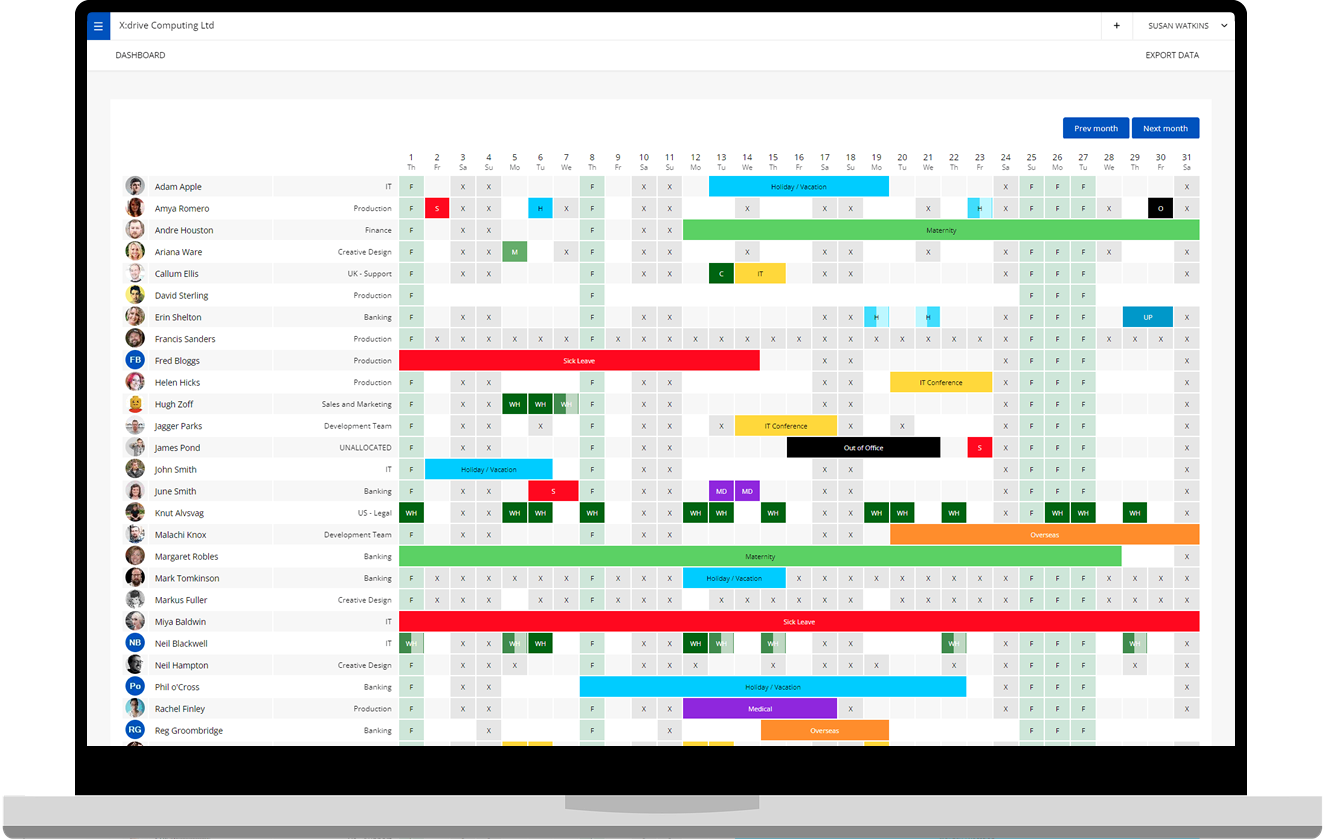The legal sector is reaching a breaking point. 9 out of 10 lawyers say they’ve experienced stress or burnout, and more than a quarter struggle daily. Law firms need to improve employee wellbeing – fast.
One strategy for lowering stress is recalibrating people’s work/life balance. But encouraging staff to step away from their caseload is easier said than done. Many law firms aren’t keeping close tabs on how much time off their team has taken, which means they can’t tell which employees aren’t using their full holiday entitlement.
Tracking annual leave could help law firms to identify staff that are putting their personal needs on the back burner. But, more importantly, it can enable business leaders to change company culture – helping staff to sustain their workloads long-term.
Can law firms spot when staff are burning out?
The legal sector is renowned for heavy workloads and long days, particularly in practice areas like corporate law and litigation. Industry figures reveal that a fifth of lawyers work more than 10 extra hours per week.
While a gruelling schedule can’t always be helped, it’s essential for staff to rest and recover regularly. Even prior to the pandemic, lawyers were the second most-stressed professionals in the UK, behind HR, which is not good for people’s productivity or wellbeing.
The impact of expectations on junior lawyers is particularly concerning. Almost half (48%) struggle with their mental health, but only 19% have reported these issues to their employers. If employers aren’t tracking how much time their team has booked off, it will be difficult to spot young and vulnerable employees on the edge of burnout.
Why do law firms struggle to track annual leave?
Without a formal system for managing staff leave, it’s difficult for law firms to monitor how much holiday employees have booked. And tracking time off has become an even bigger challenge in recent years for two main reasons:
- Recruitment. Company headcounts are rising, with the top 100 UK law firms expanding their workforce by 1.3-3.6% during 2022. This increase means there are more people’s needs to manage – and a simple holiday spreadsheet isn’t up to the job.
- Location. Remote and hybrid working setups are commonplace. Over 60% of the top 100 UK law firms plan to reduce their office footprint in 2023, and when employees work remotely, keeping an eye on people’s movements is harder. Without an annual leave tracker, bosses may be unable to tell the difference between who’s off and who is working from home.
To keep a closer eye on annual leave, law industry leaders are investing in an online holiday calendar. Swapping spreadsheets and manual systems for something more sophisticated is helping them to track time off trends and highlight staff who need to use their holiday allowance.
How can a leave tracker benefit lawyers?
Leave management software may seem like ‘yet another system’ to manage alongside other admin tools like timesheets. However, market-leading platforms like WhosOff are simple to operate and can significantly impact people’s wellbeing.
An online leave tracker for lawyers gives legal practices the visibility and structure to improve employees’ work/life balance. Key benefits include being able to:
- Log leave in one central calendar so bosses can view company data at a glance
- Track how much time off people have booked to highlight any staff members who aren’t using their entitlement.
- Enforce holiday policies to make sure everyone is following the same structure.
- Limit carryover to stop staff rolling over too much leave from one year to the next.
- Analyse holiday data and create valuable reports that highlight issues with company culture.
Some platforms, like WhosOff, also enable law firms to log other types of time off alongside annual leave. For example, tracking staff sick days can measure the impact of presenteeism on people’s wellbeing. And logging paid overtime can correlate how many extra hours people work with how much time they take off.
How can legal practices improve employee wellbeing long-term?
Most legal sector employees expect to put in long hours. And most law firms appreciate the stress this places on staff. However, neither can afford to reach breaking point before the problem gets addressed.
Some legal practices have already introduced activities to help people’s wellbeing. But long-term, staff stress levels can’t be solved with yoga classes and mindfulness workshops. Company culture must fundamentally change to improve people’s work/life balance.
Tracking annual leave lets law firms see how often people take a break. But, more importantly, it identifies departments and individuals putting their needs behind work. From here, companies can introduce new policies and working practices that encourage staff to take time for themselves.
By prioritising employee wellbeing and putting a solid infrastructure in place to manage staff leave, law firms can help staff to recharge their batteries and ensure their workloads are sustainable.

Photo by EKATERINA BOLOVTSOVA of Pexels.com

